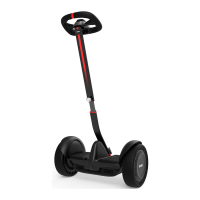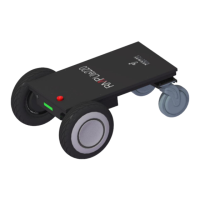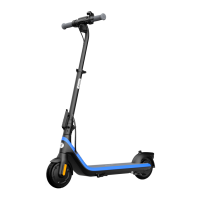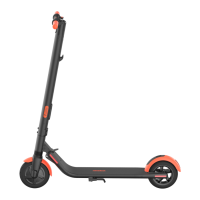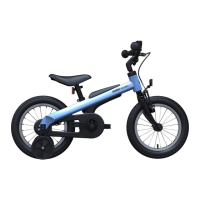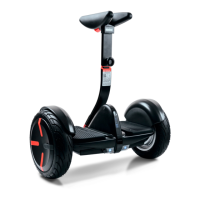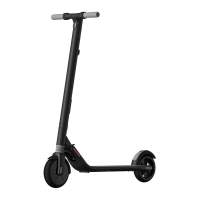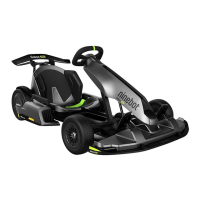operation.
NOTE This equipment has been tested and found to comply with the limits for a Class B digital device, pursuant to part 15 of the FCC
Rules. These limits are designed to provide reasonable protection against harmful interference in a residential installation. This
equipment generates, uses and can radiate radio frequency energy and, if not installed and used in accordance with the instructions,
may cause harmful interference to radio communications. However, there is no guarantee that interference will not occur in a
particular installation. If this equipment does cause harmful interference to radio or television reception, which can be determined by
turning the equipment off and on, the user is encouraged to try to correct the interference by one or more of the following measures:
–Reorient or relocate the receiving antenna.
–Increase the separation between the equipment and receiver.
–Connect the equipment into an outlet on a circuit different from that to which the receiver is connected.
–Consult the dealer or an experienced radio/TV technician for help.
This equipment complies with FCC radiation exposure limits set forth for an uncontrolled environment.
Industry Canada (IC) Compliance Statement for Canada
This device complies with Industry Canada license-exempt RSS standard (s). Operation is subject to the following two conditions:
1. This device may not cause interference, and
2. This device must accept any interference, including interference that may cause undesired operation of the device.
CAN ICES-3 (B)/NMB-3(B)
Neither Segway Inc. nor Ninebot is responsible for any changes or modifications not expressly approved by Segway Inc. or Ninebot.
Such modifications could void the user’s authority to operate the equipment.
Segway S-PLUS (model N4M350)
FCC ID: 2ALS8-NB5213 IC: 22636-NB5213
Remote Control (model N4MZ68)
FCC ID: 2ALS8-NBPLUS IC: 22636-NBPLUS
Important WEEE information
WEEE Disposal and Recycling Information Correct Disposal of this product. This marking indicates that this product should not be
disposal with other household wastes through out the EU. To prevent possible harm to the environment or human health from
uncontrolled waste disposal, recycle it responsible to promote the sustainable reuse of materials resources. To return your used
device, please use the return and collection systems or contact the retailer where the product was purchased. They can take this
product for environmental safe recycling.
Battery recycling information for the European Union
Batteries or packaging for batteries are labeled in accordance with European Directive 2006/66/EC and amendment 2013/56/EU
concerning batteries and accumulators and waste batteries and accumulators. The Directive determines the framework for the return
and recycling of used batteries and accumulators as applicable throughout the European Union. This label is applied to various
batteries to indicate that the battery is not to be thrown away, but rather reclaimed upon end of life per this Directive. In accordance
with the European Directive 2006/66/EC and amendment 2013/56/EU, batteries and accumulators are labeled to indicate that they
are to be collected separately and recycled at end of life. The label on the battery may also include a chemical symbol for the metal
concerned in the battery (Pb for lead, Hg for mercury, and Cd for cadmium). Users of batteries and accumulators must not dispose of
batteries and accumulators as unsorted municipal waste, but use the collection framework available to customers for the return,
recycling, and treatment of batteries and accumulators. Customer participation is important to minimize any potential effects of
batteries and accumulators on the environment and human health due to the potential presence of hazardous substances.
Before placing electrical and electronic equipment (EEE) in the waste collection stream or in waste collection facilities, the end user of
equipment containing batteries and/or accumulators must remove those batteries and accumulators for separate collection.
Restriction of Hazardous Substances (RoHS) Directive
This Ninebot (Changzhou) Tech Co., Ltd. product, with included parts (cables, cords, and so on) meets the requirements of Directive
2011/65/EU on the restriction of the use of certain hazardous substances in electrical and electronic equipment (“RoHS recast” or
“RoHS 2”).
Radio Equipment Directive
Segway Europe BV, Hogehilweg 8, 1101 CC Amsterdam, The Netherlands. Hereby, Ninebot (Changzhou) Tech Co., Ltd, declares
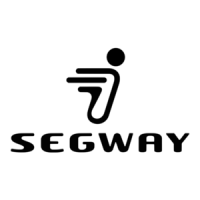
